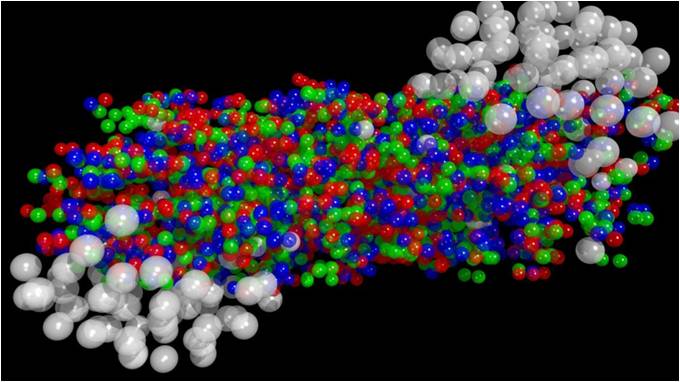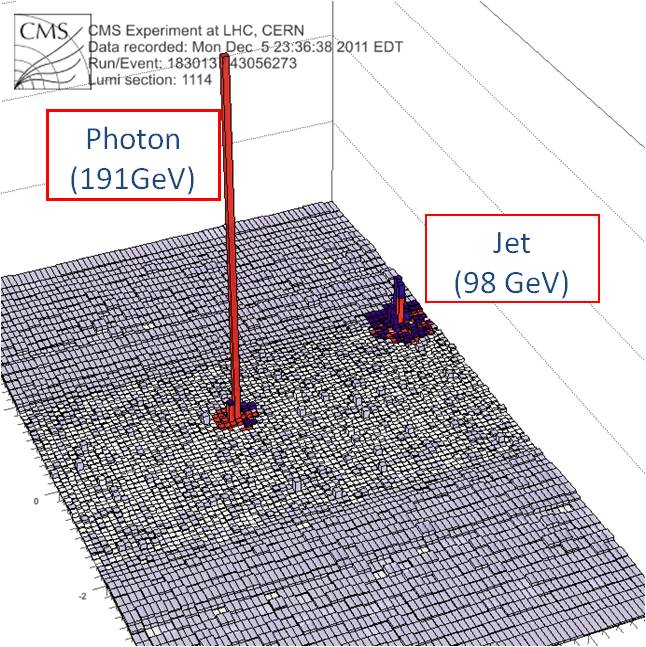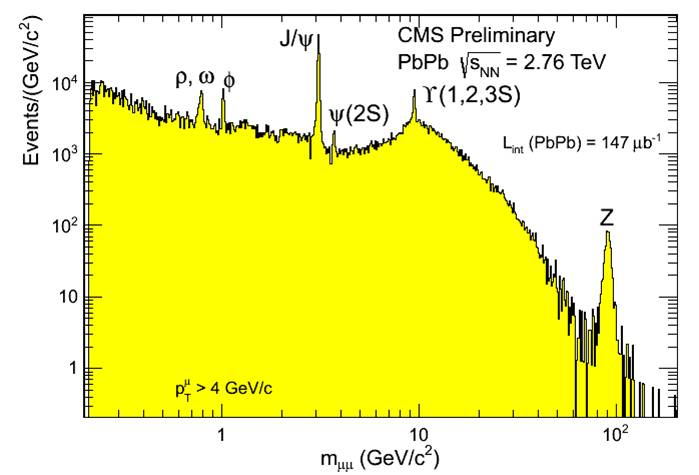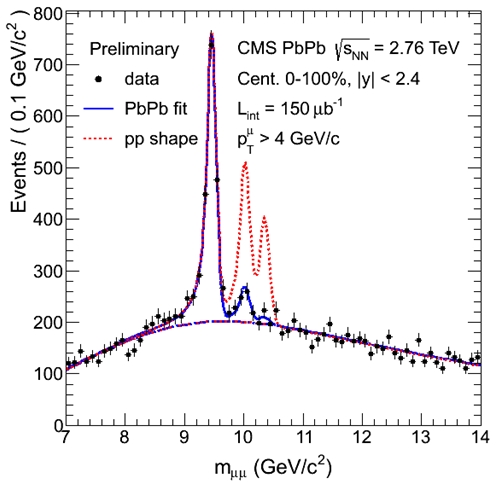As usual, I am lagging behind with the task of putting together my presentation slides. This time I had been working at a reasonable pace while on vacation, and I thought I was almost done, when I was notified that due to the absence of the CMS colleague who was in charge of speaking about CMS Heavy Ion Results, I was to cover in more detail that part than I would have.
The funny thing is that until yesterday I had basically left heavy ion physics out of my talk completely. So that was quite some work to put together some summary slides to cover the nice new results that CMS has been producing in that area.
That's the reason why I am now posting some of that stuff here - I thought it might be interesting to you, and it is stuff I am dealing with anyway today.
So what is heavy ion physics ? It is the study of nuclei of heavy elements, which are nucleons - protons and neutrons - bound together by the strong force. We know a lot, but not everything, about the way nucleons are organized in heavy nuclei, so there is a lot to learn there. But at a particle collider like the LHC, what we do is rather study, using heavy nuclei as projectiles, the state of matter called "quark-gluon plasma" which forms, for very brief moments, when a energetic collision takes place.
Quark-gluon plasma is a dense and hot medium. In it, quarks and gluons behave quite differently from what they normally do: they can be deconfined, i.e. free from tight bounds that force them inside hadrons. We do not know very well the way they behave in that situation, so it is quite interesting to compare what theoretical models predict with what we observe inside our experiment.
 LHC has been colliding heavy ions (lead atoms to be precise) at energies of up to 2.76 TeV per nucleon. That is a much more energetic collision that a regular 8-TeV proton-proton collision overall, since the number of nuclei in lead is over 200. But of course the energy is not concentrated in a single parton-parton collision, but rather shared by many such collisions that happen synchronously within the nuclear radius. The picture on the right sort of gives the idea of what we are talking about (the white spheres are nucleons , the small ones are quarks and gluons interacting during the collisions; here the nuclei have been traveling from left to right and from right to left - what remains of the former is on the upper right, what remains of the latter is on the lower left).
LHC has been colliding heavy ions (lead atoms to be precise) at energies of up to 2.76 TeV per nucleon. That is a much more energetic collision that a regular 8-TeV proton-proton collision overall, since the number of nuclei in lead is over 200. But of course the energy is not concentrated in a single parton-parton collision, but rather shared by many such collisions that happen synchronously within the nuclear radius. The picture on the right sort of gives the idea of what we are talking about (the white spheres are nucleons , the small ones are quarks and gluons interacting during the collisions; here the nuclei have been traveling from left to right and from right to left - what remains of the former is on the upper right, what remains of the latter is on the lower left). Of course these collisions yield thousand of particles, and reconstructing everything is very difficult. Yet we can do two things: we reconstruct the most energetic particles exiting the collision point, and we can measure the global characteristics of the energy and momentum flow; the latter give us a picture of how "central" has been the ion-ion collision, so that we can relate this centrality to the observed behaviour of the hard probes (muons, jets, photons). Of course, peripheral nucleus-nucleus collisions produce less central energy flow, while head-on ones are those where the flow is more uniform in rapidity. Check out the kind of mess we are talking about by observing the reconstructed energy (in green, as seen by the CMS calorimeter system) of a typical collision in the event display on the left.
Of course these collisions yield thousand of particles, and reconstructing everything is very difficult. Yet we can do two things: we reconstruct the most energetic particles exiting the collision point, and we can measure the global characteristics of the energy and momentum flow; the latter give us a picture of how "central" has been the ion-ion collision, so that we can relate this centrality to the observed behaviour of the hard probes (muons, jets, photons). Of course, peripheral nucleus-nucleus collisions produce less central energy flow, while head-on ones are those where the flow is more uniform in rapidity. Check out the kind of mess we are talking about by observing the reconstructed energy (in green, as seen by the CMS calorimeter system) of a typical collision in the event display on the left.By comparing observable quantities measured in proton-proton collisions (at the same nucleon collision energy of 2.76 TeV/N) with ones measured in lead-lead collisions, and recently also in lead-proton collisions, we can understand a lot about quark-gluon plasma. For example, we predict, and observe, that a very energetic collision producing a photon recoiling against a quark will manifest itself as a photon opposite a hadronic jet, with the hadronic jet having much less transverse momentum than the photon. That's because the photon escapes the hot plasma without interacting strongly with it, while the quark "slows down" while traversing it.
Rather than a histogram or a graph, the event display below speaks more clearly about this "jet quenching" phenomenon. The jet should balance in transverse momentum the photon, yet it doesn't: much of its momentum has been thermalized while the quark traversed the plasma.

Another interesting thing to do is to study quarkonium production. Quarkonium states like the J/ψ, the ψ(2S), the Υ(1S), Υ(2S) and Υ(3S) are easy to detect even in the complete mess of a heavy ion collision when they decay to pairs of muons, as is clear e.g. by observing their peaks in histograms such as the one below.

Quarkonium is a bound state of a heavy quark-antiquark pair. In a dense quark-gluon plasma the pair does not bind, because the temperature is too high compared to the binding energy. Since the binding energy of different states is different, we can understand more about the energy density of the plasma by observing how much different quarkonium resonances are suppressed.
For example, if you compare the three Upsilon peaks in proton-proton and lead-lead collisions as is done in the picture below, you learn that the most affected one is the Υ(3S), which is almost invisible; the Υ(2S) is present but heavily reduced, and the Υ(1S) is almost unaffected (the red dashed curve shows the shape of the resonances fit in proton-proton collisions). The binding energy of the 3S state is the smallest, and that's why it is the one which is harder to form in heavy ion collisions.
We can thus study this reduction in yield as a function of the other characteristics of the collision and gain insight in the physics of this very special state of matter.

By preparing the talk I discovered a large number of very nice results, and I cannot discuss them here (some of them are not quite easy to describe, too). Of course for those of you who want to know more, there's the chance to visit the public page of the CMS results, and navigate to the heavy ion results... Have fun!



Comments